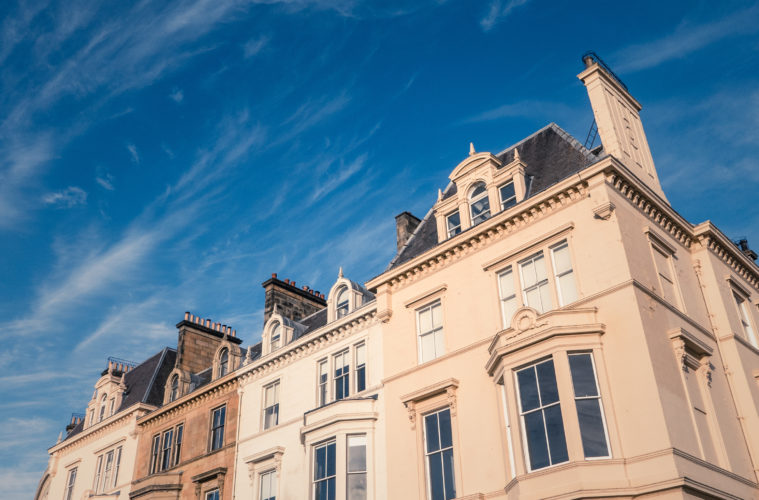Nestled between the lush green of the South Downs and the bright blue of the English Channel, Brighton often feels like a picturesque bubble compared to other parts of the UK.
Its history is certainly a contributing factor, with the city receiving royal patronage during the late 18th century when the Prince of Wales (later to become George IV) decided to build the Royal Pavilion as his personal seaside retreat. This brought an influx of wealth and interest over the next 40 years, helping Brighton grow into the beautiful city we see today.
It was during this Georgian period – and specifically the Regency – when the imposing, elegant terraces of Brunswick Square and Kemptown sprung up. With their high ceilings, tall windows and pleasing proportions, it’s easy to see why these properties made attractive homes when they were first built, and how they have retained this appeal until today.
If you’re lucky enough to have one of these splendid Brighton properties, the best way to enjoy it is to embrace its history and design an interior in-keeping with its prestige. There are five main ways in which to bring Georgian design back into your home and celebrate its unique heritage.
Colour
Often referred to as ‘the Age of Elegance’, Georgian interiors typically feature a delicately balanced colour scheme, with decorative plasterwork or gilding being offset by muted tones. In the early Georgian style, you could find berry-red or moss-green covering every wall, floor to ceiling, with ornate door frames, fireplaces and coving highlighted in a much paler shade. Later in the period, the Georgian style evolved to feature light colours, like dusky pinks, soft greys and Wedgewood blue.
Always use a matt finish, and resist the urge to mix-and-match wall colours in one room. If you do need to break up the space visually, add panelling, marble-effect paintwork or large paintings in gilded frames. You should also use pattern in your carpets and upholstery to add visual interest against simpler walls.
If you’re feeling nervous about adding a splash of colour, go for a wander around the Royal Pavilion for inspiration. Though the outside is a single shade of off-white, inside is a playful riot of colour which demonstrates how Georgian decor and architecture come together.
Flooring
Georgian homes would typically have beautiful wooden floorboards throughout most of their rooms, but larger mansions might also have stone, marble or tile flooring. These would have been covered with large Oriental rugs or polished to a high shine.
Furniture
During the 18th century, there was a surge in demand for formal furniture designed specifically for leisure pursuits like card playing, writing, housing books and hosting parties.
Brighton’s fabulous collection of flea markets and antique shops make it perfectly possible to find some of these gems and furnish your Georgian or Regency home without straying too far from the original period. Look for bureaus, console tables and drop-leaf dining sets with elegant yet pared-back style. If you can’t find exactly what you’re looking for, don’t settle – Georgian furniture was all about the appreciation of craftsmanship, so a flat-pack bookshelf simply won’t do your home justice.
Another option is to create a fusion between the traditional and contemporary and replicate the look and feel of the period of your home. Skilled joiners like Juniper Workshop can effortlessly build bespoke Georgian wardrobes or free standing furniture designs with tapered legs or scroll wings, with a twist by using modern fabrics or materials. Feature furniture might include a four-poster bed, chaise longue or a leather-topped drum table, and it would have been common for upholstery and curtains to match. It’s imperative that your furniture is the correct proportion for your home, so investing in expert assistance will pay off.
Panelling
If you’re lucky enough to have period panelling in your home, do your best to maintain and restore it. Talk to a specialist to do this, as you’ll need to avoid disturbing any structurally sound areas and focus on replacing broken framework first. They will also be able to accurately recreate stains or varnishes and reproduce carvings and architraves so that new panels are indistinguishable from the old ones.
Lighting
One of the most enjoyable parts about refurbishing a Georgian property is the excuse to experiment with all kinds of lighting. High ceilings lend themselves perfectly to dramatic light fittings, while decorative trims and gilt details cast wonderful shadows around the room.
Chandeliers and candelabras would have been common in wealthier homes, as would sconces and lanterns. Georgians of all classes would still have maximised all available natural light, however, so make sure your lighting plan works harmoniously with your large windows and doorways. Typical arrangements would include wall lights to brighten the edge of a room during the day, with a statement pendant hanging from the centre of the ceiling to create ambience in the evening.
Part of the joy of living in Brighton is its diversity and capacity for change over time. However, beloved monuments like the Royal Pavilion and West Pier show how the city’s history continues to be treasured. Celebrate your own piece of regal Brighton with a period-inspired renovation and you’ll have a home to be proud of for a very long time.




